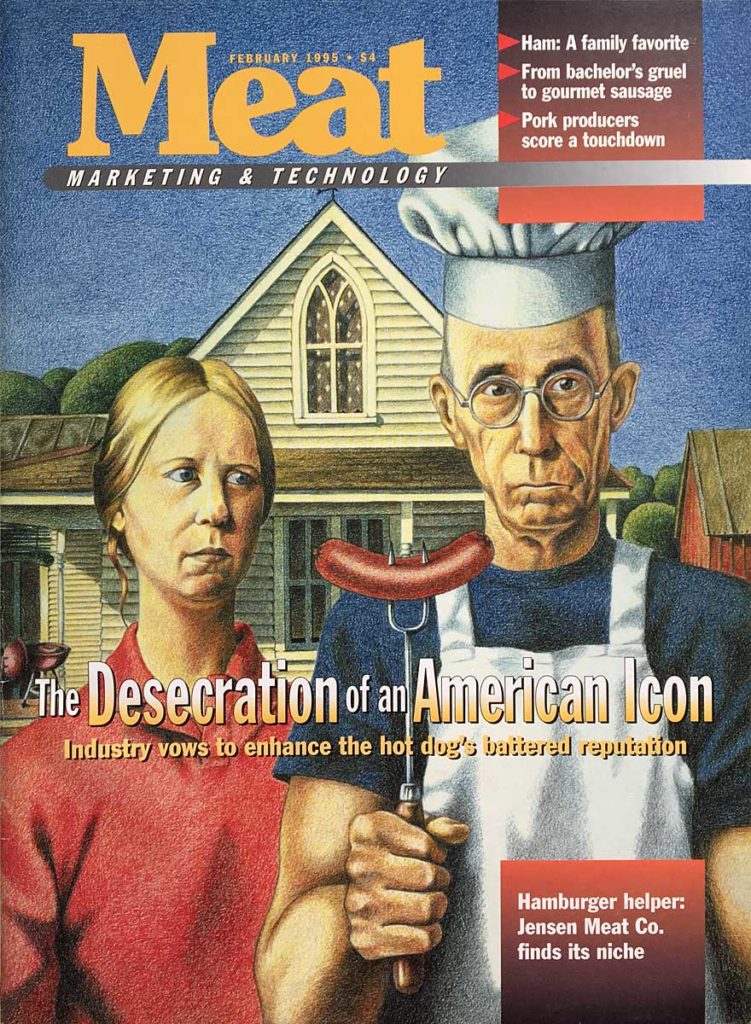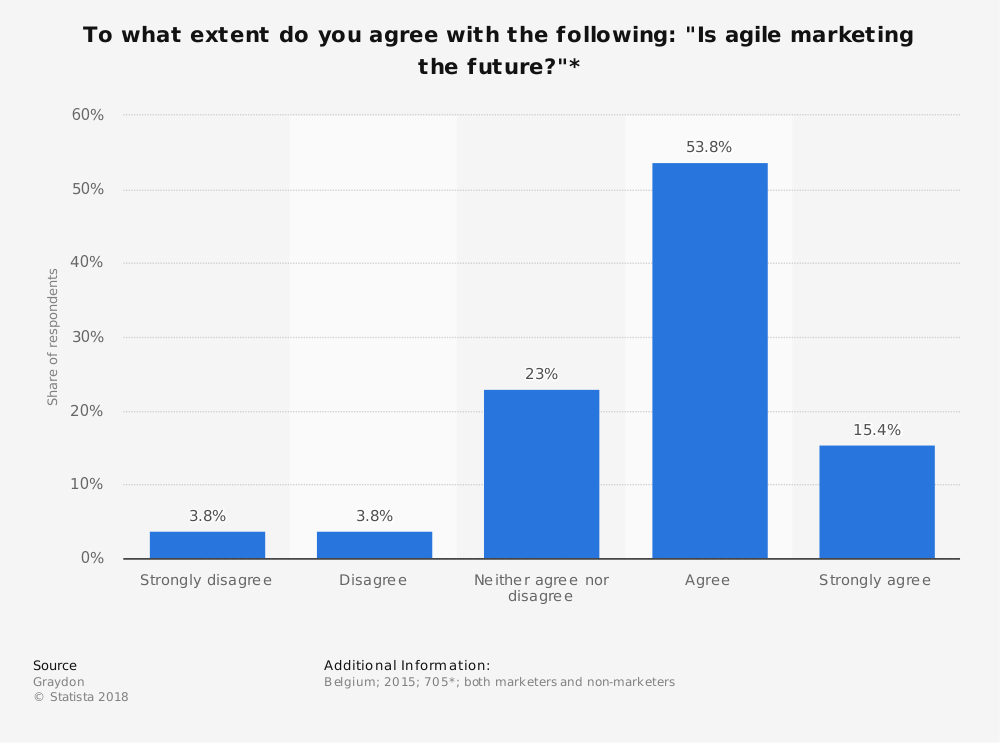Finding Your Way Beyond “Best Practices” — An Agile Marketing Crash Course
By Neil Ruffolo, Director, Digital Strategy
Does it feel like you are always chasing the leader in your category? Your team has all the bases covered and boxes checked, including search engine marketing, social media, email automation and video content. And the quality is first rate. Yet year-in and year-out you are still in reactionary mode, trying to beat the champ using the best practices they probably pioneered in your industry. To gain ground and win big you need to play by a different set of rules. That means ditching your dependence on imitation in favor of an Agile Marketing methodology that nurtures innovation and marketing excellence born of your brand’s strengths.
I’m always suspicious of the term best practices. In my view, the way most people use it is inaccurate and misleading. No matter the discipline, you will rarely find consensus among experts on exactly what qualifies as a best practice. This is particularly true in the ever-changing field of digital marketing. When not used to hype a trending new technology, citing best practice is often used to end further discussion. Saying “I’m following established best practices” sounds more legit than “Just trust me. I know what I’m doing,” but they both pretty much mean the same thing. All of this applies equally to the term best in class.
For executives with aggressive goals to meet, so-called best practices are a double-edged sword that can help and hinder growth potential. In the most positive sense, best practices are reliable standards and norms, or conventional wisdom. As such they are useful for ensuring basic competence in the execution of a strategic initiative. The problem is that the potential for best practices to outperform industry rivals and drive growth is inherently limited.
Once competitors are all using the same marketing tactics in a similar way, it doesn’t take long for best practices to become the way things are always done. And that is no way to gain ground. Worse yet, trying to mimic the success of the top brand in your category is almost always a lost cause. Unless you are the uncontested leader of the pack, you’re not going to win that race. Look no further than Amazon for a good example of this. There are plenty of general retailers, but even Walmart is an also-ran when it comes to eCommerce.
Breaking away from the pack requires real or perceived strengths unique to your brand. The positioning strategy should be well researched to identify its pillars. However, the strategy execution needs wiggle room to develop into something extraordinary.
Extraordinary results are cultivated, not manufactured
Relying only on best practices is like treading water. You may not be drowning, but you’re not getting anywhere. And if the goal is to gain market share, treading water isn’t going to cut it. Recognizing best practices as a form of confirmation bias is the first step toward developing a competitive advantage that cannot be replicated.
It’s easy to understand why executives are comfortable with the idea of best practices. The term itself suggests something codified and safe with a guaranteed positive outcome. In contrast, any type of creative process sounds uncertain and risky at best, flakey at worst. In fact, the creative process can minimize risk while opening up the potential for an extraordinary outcome.
Take for example the trade magazine cover illustration below. I drew this American Gothic parody by hand almost 25 years ago before my career took turns I could not have imagined at the time. It’s no masterpiece and obviously not 100% original, but it did help differentiate our startup publication from the established trade rivals back in the day. So how is it relevant to the digital marketing work I do for industrial manufacturers today? Believe it or not, the execution processes have rather strong parallels.

People always ask the same three questions about a drawing like this. The first question is How do you know where to start? There is no simple answer to that. You just have to get started without being stymied by the blank board in front of you. The next question is How long did it take? If memory serves, this one took about 50+ hours. Finally, they ask Weren’t you afraid you would mess up after putting in so much time? In fact, it is almost impossible to “mess up” after getting a good start. This is because drawing in this manner is an incremental process. Minor technique adjustments and corrections are made as you review the result of the work in progress.
Years later it occurred to me how this is the very same way a successful digital marketing initiative develops. And it doesn’t matter if we’re talking owned, earned, or paid media, including websites, automated email, digital advertising… you name it. It all follows a similar course.
Adjustments and corrections are made as you review the resulting KPIs that come in. Is the open rate of your automated email disappointing? Test different subject lines to find a message that captures the attention of your audience. Are your digital ads generating few leads? Adjust the targeting criteria to reach a more receptive audience, or optimize the landing page to maximize its conversion rate. As long as you are committed to the process of continuous improvement, the risk of failure is mitigated by incremental execution. Sooner or later you end up with an outcome that is unique to your brand. So getting started is far more important than perfection at the outset. And valuable knowledge is gained from tiny missteps along the way.
So whether it’s a work of art or marketing, extraordinary outcomes take shape organically. Neither can be manufactured through prescribed best practices. The systems integrators and software developers in IT have learned this too, only they know it by another name.
An Alternative Approach: Agile Marketing Methodology
Your team is your best potential source for competitive differentiation. The Agile Method can infuse the creative innovation process into a team environment. It places emphasis on the people doing the work and how they work together. So it sets the stage for extraordinary solutions to evolve through collaboration.
In the words of the Agile Alliance, “Agile is the ability to create and respond to change. It is a way of dealing with, and ultimately succeeding in, an uncertain and turbulent environment.” It allows for feedback and adjustments to be made at every stage of execution, similar to the method of drawing described above.
It all started back in the 1990s as Agile Software Development, a framework for managing complicated, evolving IT projects, like a large corporate website. Since then this inspect-and-adapt approach has itself been adapted to an array of other fluid initiatives, including marketing and product commercialization. There are a growing number of software platforms that support Agile marketing. These include Markodojo, Vtiger CRM, and the Agile Connector add-in for Microsoft Project. But anyone can informally adopt Agile by following six basic guiding priorities:
The Agile Marketing Manifesto
- Responding to Change over Following a Plan
- Rapid Iterations over Big Campaigns
- Testing & Data over Opinions & Conventions
- Many Small Experiments over a Few Large Bets
- Individuals & Interactions over Target Markets
- Collaboration over Silos & Hierarchy
With a continuous delivery or always-on mindset, Agile bypasses analysis paralysis so teams can move forward in the absence of a complete set of requirements and specifications.

Best practices are fine, but they will only get you so far if you are not continuously improving, testing and adapting. Whether you call it the creative process, or the Agile Method, prioritizing the conditions needed for innovation to flourish is one of the things that will differentiate your brand and take it to the next level.




